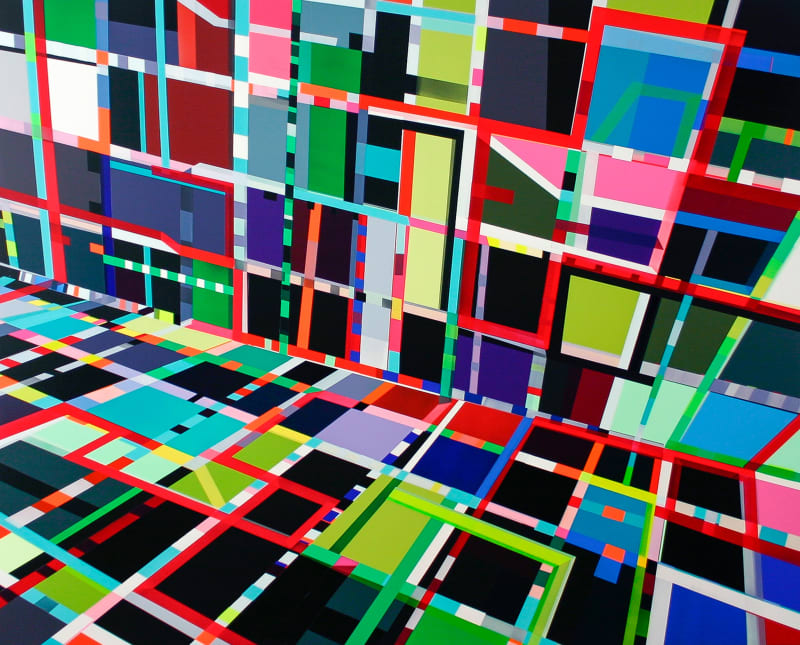Over the past five years Torben Giehler has made paintings that
draw in equal parts on digital technology and traditional mediums.
Invoking the aesthetics of video games and computer animation on
the one hand and painting's tenuous balance of control and accident
on the other, Giehler consolidates these customary opposites into a
strangely compelling hybrid visual language.
Giehler adopts a Pop palette, amplifying the harsh impact and
liquid transparency of fluorescent magentas, greens, yellows,
and oranges with compositions that employ striking contrasts
and juxtapositions of colors. He cross-references Paul Cézanne's
paintings of Mont Sainte-Victoire with science fiction movies such
as Tron (1982), generating a type of luminosity that suggests subtle
backlighting.
Although they may look computer-generated at a distance or in
reproduction, upon closer scrutiny Giehler's paintings reveal the
artist's love of the medium, the surface buildup, its transparencies
and creases, its rich textures and sensual tactility. During the four
laborious months Giehler dedicates to each painting, the computer
becomes an intrinsic part of his working method, but is never the
actual source of the image. The artist begins from diagrammatic
outlines rendered in felt-tip pen on acetate, which are subsequently
transferred to paper for color addition, used as a point of reference,
and projected onto the canvas. As the image is progressively
redefined, Giehler digitally photographs it on a daily basis, allowing
him to continuously alternate between the painting and the computer
screen. Experimenting with colors and design, digitally breaking the
image apart, changing its orientation, and removing entire sections,
Giehler uses the computer as a sketchbook-an arena for change
and experimentation.
The Fifth Element (2005), for instance, was a vertical painting until
its final stages of articulation. After continuous manipulations of
the image on the computer screen, the artist arrived upon its final
incarnation. Giehler's titles abound with pop culture references,
especially to songs but occasionally to movies as well-The Fifth
Element, for example, shares its title with Luc Besson's 1997 sci-fi
epic. Perhaps the title is intended to trigger certain iconographic
and visual associations with the pop-tech futurism of this film,
leading the viewer to reimagine the painting's abstract composition
as a sequence of embedded chase scenes and vertiginous vertical
cityscapes. Giehler generates a new kind of space within the
pictorial field of his canvases by balancing the relations between
depth and velocity, order and chaos. Colors seem to race by
within the resolute stillness of a painting, and it is this paradox that
characterizes Giehler's work.
